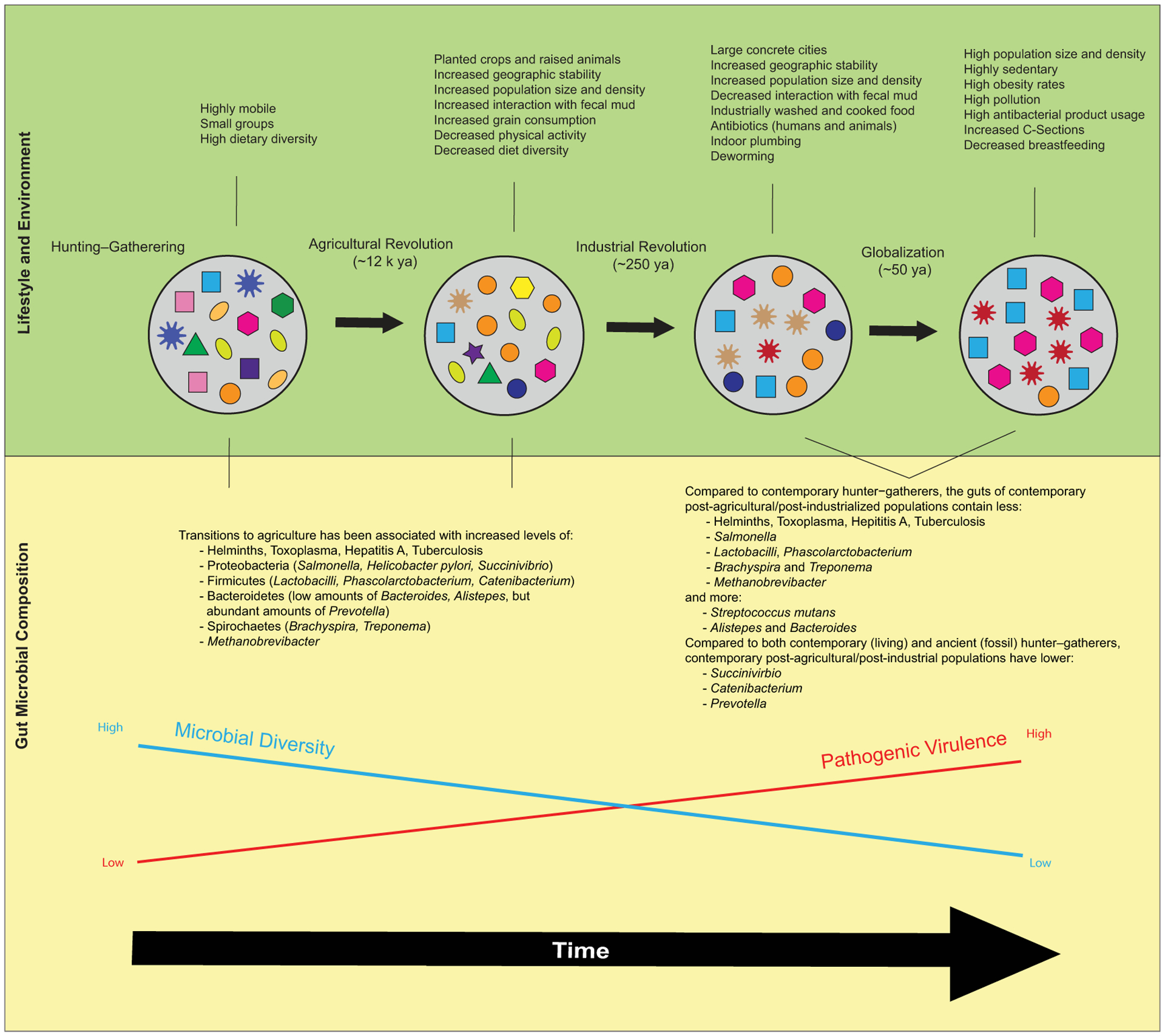Figure 1.

Over the past 15,000 years of human history, there have been a series of major lifestyle transitions that comprised changes in demography, environments, subsistence, and epidemiology. These transitions also likely brought about major changes in the composition of symbiotic microbiota, including generally reduced diversity and enhanced pathogenic virulence. Suppositions regarding pre-Agricultural Revolution gut flora are based on analyses comparing the gut microbial compositions of contemporary people who practice hunting–gathering subsistence strategies in nonindustrialized communities in Tanzania (Hadza), Peru (Matses),97 Malawi, and Venezuela,232 and fossil assemblages of Neanderthals (compilation from Spain, Croatia, Germany, and Russia), Denisovans (from Siberia233), and other early hominins (from Spain234) with those of contemporary industrialized populations in Europe, North America, Asia, and Oceania.97 We note that contemporary hunter–gatherers offer an imperfect proxy for premodern gut microbiomes.235
